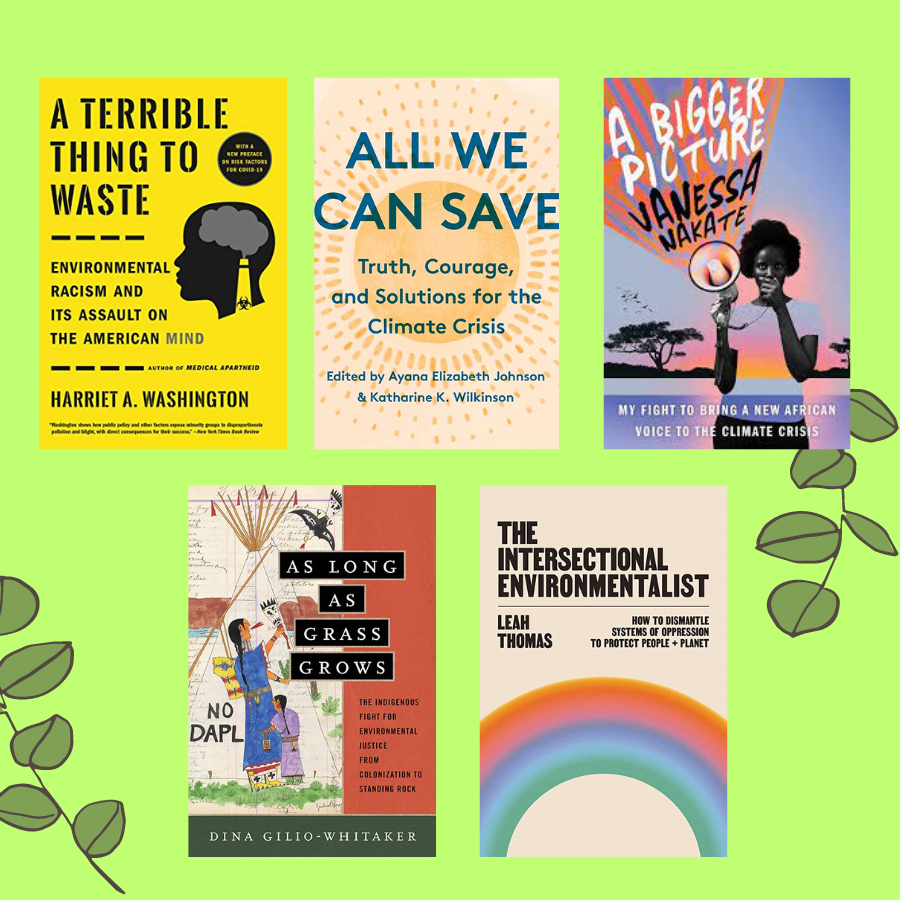This post may include affiliate links, which means we make a small commission on any sales. This commission helps Feminist Book Club pay our contributors, so thanks for supporting small, independent media!
This year, I made a goal for myself to read 12 nonfiction books in 2023. In an effort to be strategic about it instead of grabbing whatever title calls to me at any given time, I’ve decided on a few topics I’m going to focus on. One of them is environmental justice.
Environmental Justice (EJ), according to the U.S. EPA, is the fair treatment and meaningful involvement of all people regardless of race, color, national origin, or income with respect to the development, implementation and enforcement of environmental laws, regulations and policies. It is also a social movement that aims to expose and address the disproportionate effects of environmental issues on marginalized communities, particularly communities of color.
There is a lot of great literature out there on this topic. It was hard to pick only a few titles, but they are more than enough for a substantial crash course on EJ 101. Here are some great environmental justice books to get you started.
A Terrible Thing to Waste by Harriet A. Washington

CW: Ableism, Chronic Illness, Mental Illness, Racism.
Originally released in 2019, A Terrible Thing to Waste: Environmental Racism and Its Assault on the American Mind examines the connections between the psychological and intellectual problems brought on by the unfair exposure of specific communities of color to toxic environmental hazards. Washington uses the term environmental racism to describe the “disproportionate exposure of communities of color to air pollution, poisonous heavy metals, industrial chemicals, pathogens, vitamin deficiencies, diabetes, and even tobacco and alcohol in segregated, environmentally hazardous sacrifice zones.” In the 2020 paperback release, the author included a new preface that brought Covid-19 into the discussion. The book is supported by data and examples throughout, including a final section that provides tangible solutions to these problems.
As Long as Grass Grows by Dina Gilio-Whitaker

CW: Colonization, Genocide, Racism, Police brutality, Injury/Injury detail.
Previously featured as part of our April 2021 box, As Long as Grass Grows: The Indigenous Fight for Environmental Justice, from Colonization to Standing Rock is an overview of EJ theory and how it functions in Indigenous communities. The author argues that EJ work must be “indigenized,” which means “tailored to account for their very different histories, relationships to the land, and political relationships to the State.” Grounded in historical accounts and facts, As Long as Grass Grows is an academic text that also manages to be accessible. This book is the best way to get up to speed on the history behind Indigenous resistance to government and corporations who have, and continue to, violate their land and homes. It also highlights newer approaches to the work of environmental justice.
All We Can Save by Ayana Elizabeth Johnson and Katharine K. Wilkinson

CW: Grief, Colonization, Suicidal thoughts.
All We Can Save: Truth, Courage, and Solutions for the Climate Crisis is a collection of diverse voices from across the climate movement. All from different backgrounds, ages, and professions, the writers share hard-won knowledge and practical solutions for taking part in climate activism. It is a call for “feminine and feminist climate leadership, which is wide open to people of any gender.” Some notable names include Alice Walker, Joy Harjo, and adrienne maree brown. This book seems like a great starter to get an idea of the many ways there are to participate in environmental justice work. The editors noted that they realized their work needed to be more than a book, so they established the All We Can Save Project.
The Intersectional Environmentalist by Leah Thomas

CW: Racism, Colonization, Ableism.
Known as the first to define the term “intersectional environmentalism,” educator and writer Leah Thomas has compiled all her work in her 2022 book. The Intersectional Environmentalist: How to Dismantle Systems of Oppression to Protect People + the Planet captures both the theory and practice that goes into actively taking steps to save the planet. A sense of urgency sparked for the author in her introductory environmental classes and after the murder of Michael Brown in 2014. Since then, she hasn’t stopped asking questions or doing the work to bring awareness to EJ activism. This book captures all of that work, as well as the need for us to pick it up and learn from it. If anything, I’d recommend checking out the tool kit at the back of the book right away. Included is everything we can apply right now, from information on disability representation to how students can get involved, as well as a good ‘ol reading list.
A Bigger Picture by Vanessa Nakate

CW: Racism, Misogyny, Classism.
Part manifesto, part memoir, A Bigger Picture: My Fight to Bring a New African Voice to the Climate Crisis is an essential read if we care about bridging inequalities in the climate justice movement. Nakate reached virality in early 2020 after the Associated Press cropped her out of a photo at the World Economic Forum as one of five international delegates, including Greta Thunberg. Rather than silence her, this gave her a larger platform to highlight the problem of exclusion in EJ work. As part of the Ugandan community that bears the detrimental effects of consumerism and pollution, Nakate shares her story in order to highlight the need for more voices from the global south to be included in the conversation.


